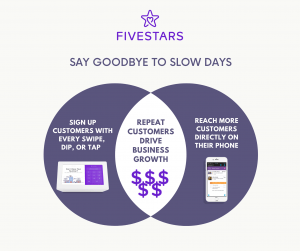The Art of Recall: Strengthening Brand Recognition with Strategic Email Campaigns
In an age where everyone is vying for a piece of the consumer’s attention, standing out is not just an advantage—it’s necessary. The term “brand recognition” often circulates in business circles, but what is brand recognition? Simply put, the public can recognize or recall a brand by its attributes. With the inundation of digital advertisements, social media engagements, and, yes, emails, ensuring your brand is not just seen but remembered has become more challenging than ever. And that’s where strategic email campaigns come into play.
Brand Recognition vs. Brand Awareness: Know the Difference
It’s crucial to define brand recognition before diving deeper. Many often conflate brand recognition with brand awareness, but they are not the same. While brand awareness is a broader concept, including familiarity with the brand and its products, brand recognition is a more specific subset. Brand recognition zeroes in on the ability of consumers to identify your brand based on visual or auditory cues. Think of Coca-Cola’s signature red or Netflix’s opening sound bite. These cues trigger immediate recognition, which is the essence of brand recognition. You can check Forbes’ article on the subject here.
Brand Recall vs. Brand Recognition
Yet another term that’s often used interchangeably with brand recognition is brand recall. But make no mistake; they are different. Brand recall is a step further than brand recognition—it’s not just about identifying the brand when you see it, but being able to recall it from memory without any cues. Brand recognition might involve seeing a swoosh and thinking of Nike, but brand recall is being asked about athletic wear and thinking of Nike without any visual or auditory aid.
Why Does Brand Recognition Help Businesses
In a world teeming with choices, brand recognition is a mental shortcut for consumers. It allows them to make quick decisions based on trust and previous experience. Strong brand recognition leads to higher customer loyalty and increased sales and growth. With many marketing channels available, email campaigns have emerged as a highly effective strategy for strengthening brand recognition.
How to Measure Brand Recognition
Now that we’ve covered the definition of brand recognition let’s talk about how to measure it. You can track several metrics, from customer surveys and social media mentions to web analytics. Knowing where you stand can guide your email marketing campaigns effectively. Techniques like Net Promoter Score (NPS) surveys or social listening tools can offer valuable insights into how recognizable your brand is in the marketplace.
The Power of Email Campaigns in Boosting Brand Recognition
Email remains one of the most effective channels for communication between a brand and its customers. But what makes an email campaign tick? The perfect email marketing campaign involves more than attractive graphics or snappy lines. It’s about consistently delivering value to the customer in a tone and style that embodies your brand. You reinforce your brand’s image when you always send out high-quality content that resonates with your audience.
Email Campaign Software and Templates
Utilizing the right email campaign software is crucial to create a high-impact email marketing campaign. Software like Mailchimp, HubSpot, or Brevo offers a range of customizable email campaign templates that you can align with your brand’s aesthetics and message. The best-automated email campaigns use these tools to create a seamless brand experience, from the email’s design to its content and timing.
Crafting the Perfect Campaign Email
When working on your campaign email, focus on elements that reflect your brand. Use your brand colors, logo, and tone of voice consistently across all email campaigns. These elements are not just superficial—they aid in brand recognition, ensuring your audience knows the email is from you even before they read it. Consistency is vital; it turns your email into another touchpoint in the customer’s journey with your brand.
Behavioral Trigger Emails: The Subtle Nudge
Behavioral trigger emails are a sophisticated step in email marketing campaigns. These are automated emails sent out based on your customers’ actions (or don’t take). For instance, sending a follow-up email to a customer who abandons a shopping cart can serve as a timely nudge, bringing your brand back to their immediate attention. These emails are highly relevant to the consumer and, thus, make your brand more recognizable for its attentive customer service. It adds an extra layer of interactivity that makes your email campaigns feel personalized and dynamic.
The Role of A/B Testing in Enhancing Brand Recognition
One of the challenges in defining a strategy is understanding what works and what doesn’t. This is where A/B testing comes in handy in email marketing campaigns. By sending out two versions of an email—with varying content, subject lines, or calls to action—you can determine which strategy is more effective in boosting brand recognition. These tests not only improve the effectiveness of your current campaign but also provide insights for future strategies. Remember, brand recognition is about consistency and familiarity, and A/B testing helps ensure that every email you send out hits its mark.
Seasonal and Event-Based Campaigns: Seizing the Moment
Event-based or seasonal email campaigns can offer unique opportunities for increasing brand recognition. Imagine receiving an email during Christmas or another holiday season, celebrating the occasion and maybe offering a special discount. The email immediately stands out because it’s timely and relevant, and if executed well, it showcases your brand’s personality. This “seize the moment” strategy can significantly amplify brand recognition because it connects your brand with wider cultural moments, making it more memorable in the eyes of consumers.
The Importance of Post-Campaign Analysis
Once an email campaign concludes, the work is far from over. Some might argue it’s just beginning. The post-campaign analysis involves poring over metrics like click-through rates, open rates, and engagement levels to evaluate the success of your email campaign in strengthening brand recognition. This data not only helps in quantifying the ROI but also provides valuable insights into consumer behavior. Understanding these patterns allows you to refine future campaigns, ensuring they continue to enhance brand recognition effectively.
Wrapping It Up: The Strategic Imperative of Email Campaign Management
In sum, strengthening brand recognition is a long-term but gratifying endeavor. Utilizing strategic email campaigns to achieve this is a multi-faceted approach, requiring an understanding of your brand, audience, and the tools available. As our world becomes increasingly digital, emails will continue to be vital to any marketing strategy. Hence, email campaign management is a technical necessity and a strategic imperative for businesses looking to leave a lasting impression.


